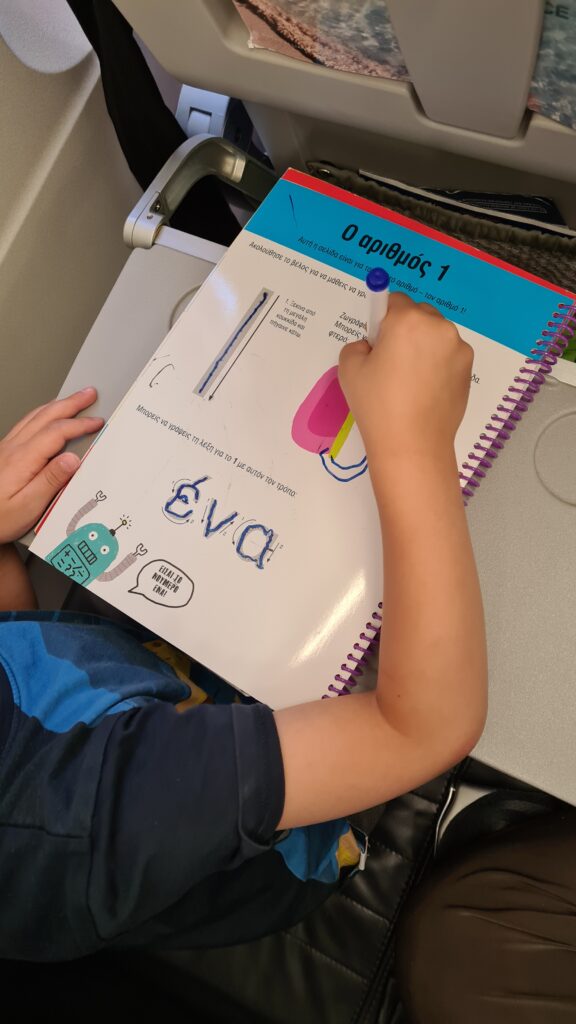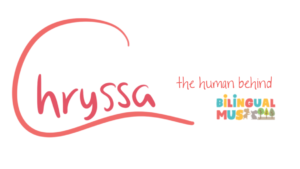Multilingualism In The Family
How Do You Design Your Own Family Language Strategy?
Multilingual Families often set the bar at the highest level of proficiency for all the languages they plan to expose their children to, without really planning how this will actually happen. This leaves them at times disappointed with the results. That is when one could start worrying: “Why my kid refuses to speak my language?”, “Why is my kid struggling with the school language?”, “Am I doing something wrong?”.
We don’t usually plan to fail, but sometimes we fail to plan and therefore get disappointed. It is important to set your own goals for your multilingual family. Say that your child is exposed to 2 or 3 languages, ask yourselves:

- Who can speak which language in our home?
- Which is the language in which “I love you” sounds more natural, more close to the heart for each parent?
- What is important for us? Which languages are really needed for our family to be able to communicate and be functional and integrated to the society?
- Should my child speak and understand all these languages?
- Would it be ok for us if my child became a receptive multilingual, i.e. if he/she could understand but not speak one/some of the languages? What is the oral fluency we want to achieve in each language?
- Should my kid be able to communicate orally with the extended family speaking one of these languages?
- In which language will the child go to school?
- What about literacy skills? Does the child need to be writing and reading in all languages?
Depending on the answers you give to these questions, you will be able to design your own Family Language Strategy that will fit your unique situation. Your strategy will be the road to the end goal.
First things first: It’s All About Exposure
Language = Communication. When it comes to language acquisition, it is all about exposure. Experts say, a child needs to be exposed to a language for a minimum of 30% of time spent awake in order to start using the language actively. Depending on the child’s age, 30% is about 25 hours a week and it is a number you should remember when planning realistic family goals. How realistic is it for your child to have at least 25 hours of exposure to each of the languages you want to have in his life? How much time and effort are you personally willing to invest in providing the exposure needed? Asking yourself these questions will help you be realistic when setting your goals.
Family Language Strategies
We have to remember: each family is different. Not all multilingual families have parents that speak different languages. Children could learn a new language when the family is relocated abroad for work or any other reason. Through adoption, children sometimes have to learn a new language. On the other hand, sometimes families have 3 or even 4 languages in the same house – keep them coming! The more the merrier!
There is no “magic button”, there is no “magic recipe”, or “one-size-fits-all family language strategy”. Experts have defined four main family language strategies that have lots of variations. Whichever strategy one chooses, one thing is for sure: nothing is set in stone! Circumstances in life change and one might need to adjust his choices.
Remember: you are allowed to re-evaluate, you are allowed to use more than one language strategy and mix things, depending on the needs of your family and of your unique situation.
1) OPOL : One Parent – One Language
Each parent speaks a different language with their children. In this case each language is connected with a person. This approach is probably the most common and works really well especially in families where each parent speaks a different language, since each parent is able to form a relationship with their child to their own native language.
2) Minority Language At Home
Non-community language is used at home by the whole family. In this case the language choice is linked to the place instead of the person, as in a different place the same people could speak a different language together. For some families, this is the only natural solution, especially when both parents speak the same minority language.
3) Time And Space
Setting time or space limits where one language is always required by all family members involved in the communication. This could be for example:
- When we read bed time stories
- Each time we have a guest not speaking our home language, and in order to be polite, we switch to the community language so that the guest understands what is being discussed
- Each Saturday afternoon
The list can go on and it is up to the family to decide what fits their needs best.
4) Mixed Language Policy
Using two languages interchangeably. Rather than having one language under one set of circumstances, such as “when we are at school” or “when we talk to dad,” and another language in other circumstances, a mixed language policy uses both languages in all circumstances. Limitations are out the window here!
YOUR Family Language Strategy
That’s it! Now it’s up to you to decide how you will approach multilingualism in your family.
But remember: everything is adjustable. You don’t need to be OPOL only. You can be OPOLish and do a bit of “Time And Space” to be polite to a guest, or to increase exposure of a language, when and if you feel it is needed.
And do not forget: multilingualism is a gift. It might be challenging for the parents and the kids at times, but it might help you to remember that multilingual people enjoy several advantages: they have enriched cognitive control, it’s likely that they have improved metalinguistic awareness, as well as better memory, visual-spatial skills and even creativity. There are also social benefits from being multilingual. For example, having the ability to explore a culture through its native tongue, or talking to someone with whom you might otherwise never be able to communicate! But let’s leave this topic for another post.
- Do you think you need help to plan your own family language strategy?
- Do you have things you would like to discuss in regards to your multilingual child?
- Are you out of ides on how to increase the exposure in a language or motivate your kid to speak your language?
- Are you concerned and you would like some advise in regards to your multilingual child?
You can contact me or book a family language coaching session.
PEaCH Video: “Choosing a Family Language Strategy”
After all that reading, here is also a video to help you think and design your own family language strategy. The video is from PEaCH, an Erasmus+ project, funded by the European Commission. The acronym PEaCH was derived from the main goal of the project: ‘preserving and promoting Europe’s cultural and linguistic heritage through empowerment of bilingual children and families’. Focusing on the 24 official EU languages, PEaCH wants to help both parents and educators of bilingual children to support their family languages.
Here are four steps that will help you choose a language strategy that is tailored to your family:
Hope you enjoyed reading!
Now give yourself a pat on the back and have a great day!


Way cool! Some extremely valid points! I appreciate you writing this post and also the rest of
the site is very good.